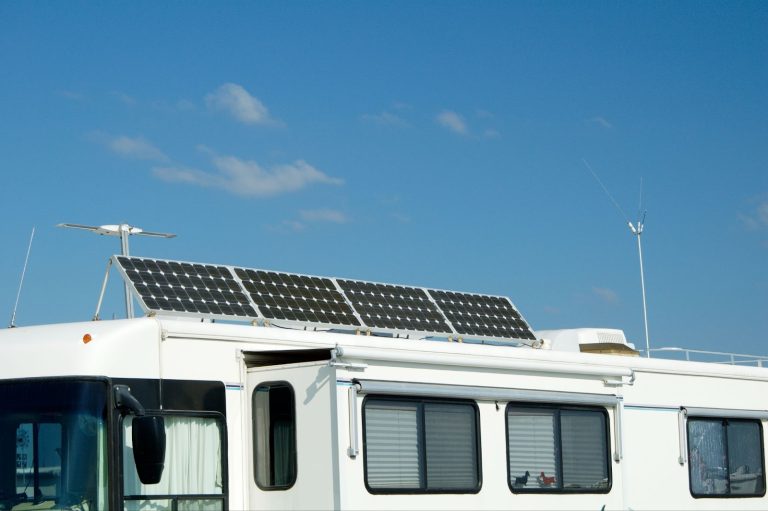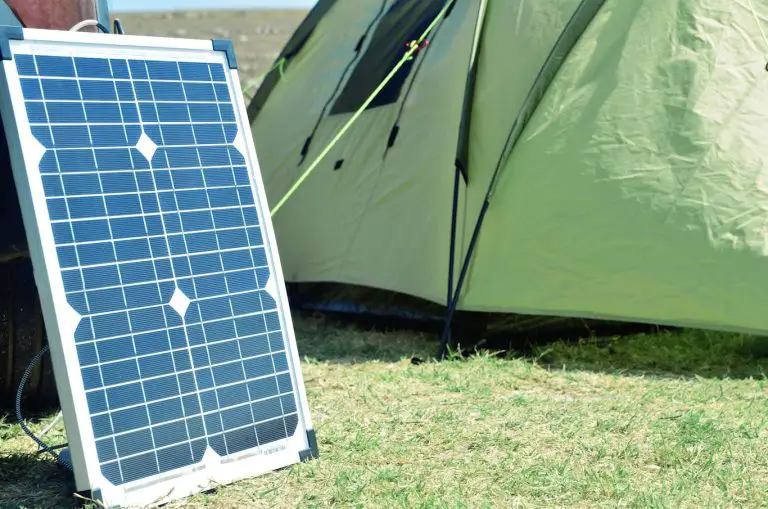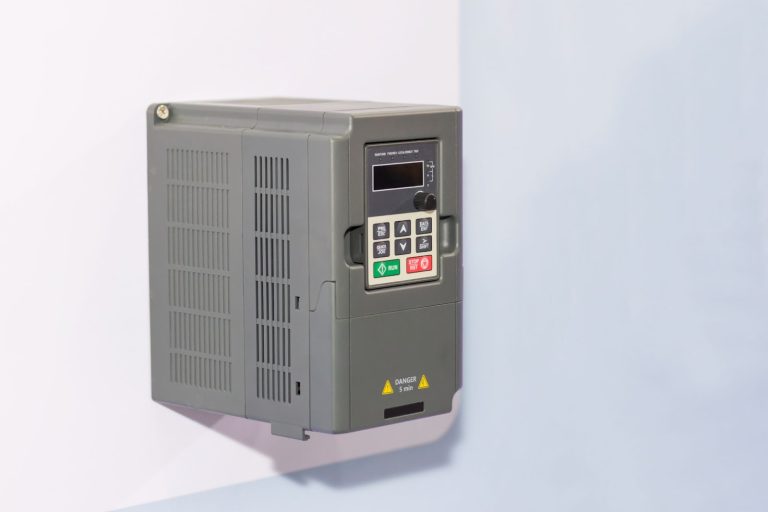What Size Solar Panel Do I Need to Charge a 12-Volt Battery?
Today’s world comes with an increasing emphasis on renewable energy sources and a heightened risks of power outages. These realities give rise to an awareness of solar energy’s usefulness and the technical means to store this energy. But how much physics do you remember, or need to understand, to do this effectively?
A “standard” solar panel will charge a 100-watt 12-volt battery in about 5–8 hours. It is typically 39 inches wide by 65 inches long, contains 60 individual solar cells, and produces 250 to 350 watts of power. Several factors affect this calculation apart from the solar panel size.
I’ll discuss the efficiency of solar charging appliances and related equipment in this article and why we need to understand some basic electrical concepts to better choose amongst the increasing range of options available in today’s market.
The Photoelectric Effect
The potential to convert sunlight to electricity, called the photoelectric effect, was recognized in the late 1800s through the work of Edmond Becquerel. But the first photovoltaic (PV) cells made of selenium in the 1950s were only able to convert about 4–6% of the energy of sunlight directly to electricity.
Over the last few decades, there have been cost reductions of approximately 92% resulting from economies of scale and technological improvements.
The best-performing mono-crystalline silicon solar panel modules can perform at nearly 25% efficiency, with record efficiencies demonstrating the potential for further efficiency increases at the production level (source).
Still, what does this mean for our ability today to charge a 12-volt battery using solar power?
Calculating Based on Standard Panel Sizes
Solar panels capture sunlight and convert it into electricity using photovoltaic cells. Each panel is made up of “wafers” of silicon connected together in series or parallel to form a solar module.
Modules made from single-crystal (mono-crystalline) cells have been shown in laboratory tests to have slightly higher efficiencies than polycrystalline cells. However, the latter is cheaper to manufacture and makes up around half of the global PV market (source).
Standard-size solar panels usually come in two size categories, corresponding with the cell count: 60-cell panels and 72-cell panels, with each panel being 5- or 6-inches square. The 60-cell panel tends to be used more for residential applications and the 72 for commercial and industrial installations.
But commercially available solar panels these days come in a wide range of sizes, from tiny 0.3-watt 2-volt mini solar panels retailing at under $6 to 390-watt 40-volt configurations.
The cell count, 60 or 72 cells, affects the output voltage of the panel. Most solar chargers are designed for 12 volts DC, but they can also be wired in series to produce 24-volt, 36-volt, and so on.
This is an important understanding for our purposes because if we want to charge a 12-volt battery, we need to ensure that the solar panel’s nominal voltage is also at least 12 volts.
The Physics
So, how is this output of the solar panel measured? First, a little high-school physics.
A solar panel produces direct current (DC). Most household appliances are designed to use the safer and more widely used alternating current (AC). Electric current is measured in amperes (amps), which records the amount of current — or the number of electrons — passing a point in an electric circuit each second at a certain voltage.
Voltage is the measure of electromotive force, which measures the amount of potential there is in an electric circuit. The higher the voltage, the more electric current will flow in the circuit.
Multiplying these together, we get a measure of the basic unit of power, called the “watt” after its eighteenth-century Scottish inventor.
Power = voltage x current
or
Watts = volts x amps.
Another term we need to be familiar with is amp-hours or Ah. This is the measure of stored power, for example, in a battery. Therefore, Ah is the number of amps drawn for the amount of time (in hours) that you draw that current.
Amps x hours = Ah.
The Solar Panels
Knowing these concepts is important in understanding the size of the solar panel needed to charge our 12-volt battery. Solar panel manufacturers rate solar output in watts. A rating of 15 watts, for example, delivers about one amp/hour (1Ah) per hour of direct sunlight under ideal operating conditions.
A “standard” solar panel produces between 275 and 400 watts of power, depending on factors like shading, the orientation of the panel towards the sun, and sunshine hours in the day. As an example, say your solar panel gets 4 hours of direct sunlight per day and generates 300 watts of power:
4hrs x 300 watts = 1200 watt-hours = 1.2 kilowatt-hours (kWh) per day.
The Math
Calculating the size of the solar panel is really all about the numbers, so when asking ourselves the question, “What size solar panel do I need to charge a 12V battery?” we have to start by making certain numerical assumptions.
A simple formula for calculating the amount of time needed to charge a lead-acid battery from solar is:
Battery capacity in watt-hours x 2 / the rated panel power in watts
We multiply the battery capacity by two because the effective capacity of a lead-acid battery is about 50% of the stated capacity, which is also why you shouldn’t discharge it below 45–50% full. Lead-acid batteries also have a lower charge efficiency than, say, lithium-ion batteries.
Using the formula above, we can calculate the time it takes for a 10-Watt 18-volt solar panel to charge a 12-volt 10Ah lead-acid battery (= 120Wh) from 50% full:
60Wh (i.e., 50% of 120) x 2 / 10 Watts = 120Wh / 10W = 12 hours
This is the time it takes to charge a battery with this solar configuration.
Using another example and a bigger 17W 18V solar panel, applying the same calculation formula:
(60Wh x 2) / 17 Watts = 7 hours and a bit.
Here’s another example. Assume the required battery charge is 50Ah. 50Ah at 12V is 600Wh. Charging under ideal conditions and using a 100W 18V solar panel, applying the formula above:
(600Wh x 2) / 100W = 12 hours.
We can see from these calculations that the size of the solar panel determines the amount of time needed to charge the 12V battery — the bigger the panel, the quicker the charging cycle.
Why Do I Need a Battery?
Why can’t a solar panel feed directly into my electrical circuit to keep everything going?
As we have mentioned, most appliances work off AC power, and some form of converter is needed to transform the DC power generated by my solar panel into the more usable AC current. This appliance is called an inverter.
More importantly, solar power is limited by the number and quality of daylight hours, and that’s where a battery comes in (source).
Along with solar panel technology, battery technology has also advanced in leaps and bounds. The traditional — invented way back in 1859 — lead-acid battery is more suited to providing the surge of current needed for automotive starter motors.
Another type of lead-acid battery, the deep-cycle battery, is better suited to solar power storage needs since it is designed to handle multiple recharge cycles.
The deep-cycle battery can also be discharged to a lower level, although usually not below 45-50%, and recharged regularly, as opposed to the starter battery that is usually maintained at a particular charge level (source).
What Other Equipment Do I Need?
You will also need a charge controller or regulator to monitor the flow of current between the solar panel and battery. We’ve noted that solar power is erratic in terms of low light levels and the angle of light hitting the panel directly and may also be affected by ambient temperature (source).
A 12V battery needs at least 13.6V to charge, which is the level of charge required from the solar panel. In ideal sunshine conditions, a 12V solar panel may output 17V or more. If you plug this directly into your charging battery, it is likely going to cause some damage to the battery.
The charge controller is designed to take those 17V+ from the solar panel and moderate it to a voltage that is safe and usable to charge your 12V battery. In doing so, it also protects your solar panel from overcharging the battery and promotes longer battery life.
Conversely, if the sunlight conditions deteriorate, the solar panel may shut down, and your on-charge battery may start to discharge. So, a solar charge controller/regulator is something like an on-off switch that allows power to pass through when the battery needs it and cuts it off when the battery is fully charged.
Final Thoughts
Keeping your battery bank fully charged is an essential element to having solar energy conveniently on tap, even when the sun isn’t shining, and the size of the solar panel will determine how long it takes to charge a 12-volt battery.
With China, the rest of Asia-Pacific, and Central Asia leading the way, photovoltaic technology is making rapid gains on traditional sources of power generated by fossil fuels. The US and other western countries will soon catch up with this trend.
Solar panels are currently the primary source of PV energy and, together with ever-more-efficient battery storage capacity, are becoming an off-the-shelf and cost-effective way of providing clean, renewable energy for all applications.







